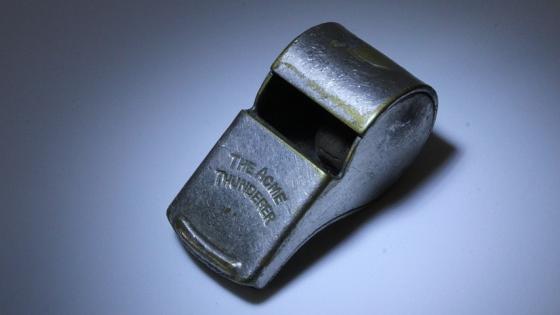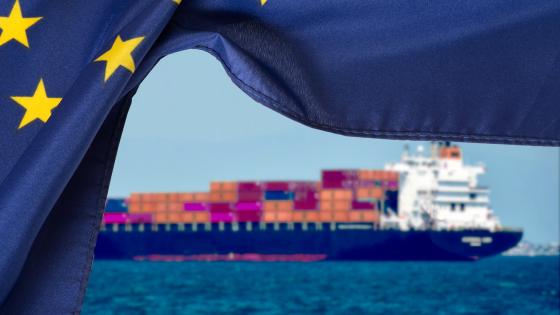On 17 April 2018, the European Commission proposed a directive that provides increased protection for whistleblowers in the EU.1 This is important given that global organised crime is becoming increasingly sophisticated making traditional enforcement methods less and less effective (Radu 2016). Meanwhile, whistleblowers and journalists are being hunted in the EU by governments and criminal organisations. Examples abound. On 26 February, Ján Kuciak, a Slovakian journalist, was murdered in his home for investigating political connections to organised crime in the heart of Europe (Washington Post 2018). In October 2017, Daphne Caruana Galizia was killed by a car bomb after writing about corruption in Malta in connection with the Panama papers (Financial Times 2017). Maria Efimova, an employee at a private bank who claimed that her employer had moved illegal funds for Maltese politicians, is under an arrest warrant from Malta and Cyprus on seemingly unrelated charges (The Guardian 2018). Hervé Falciani, who blew the whistle on the bank he was working for in Switzerland that helped clients evade billions of dollars in taxes, was arrested in April in Spain after an arrest warrant issued by Switzerland on 19 March, though he has now been released on bail (Financial Times 2018). The last two examples, in particular, suggest that improving whistleblower protection should have a high priority in Europe.
The EU directive and why protection may prove insufficient
The proposed directive should in principle offer increased protection to whistleblowers. It bears some resemblance to the US Sarbanes-Oxley Act (2002) but applies more extensively. It includes the mandatory establishment of confidential internal reporting channels for all firms with more than 50 employees and a large range of public administrations that also allow for anonymous reporting (Article 5). It prohibits a wide range of retaliatory actions (Article 14), places the burden of proof on the employer in cases of alleged retaliation (Article 15), and defines ‘whistleblower’ broadly to encompass sub-contractors, trainees, and any other person associated with a wrongdoing firm in a ‘work-related context’ (Article 2).
The directive is a move in the right direction, as European protection for whistleblowers is low and uneven among member states, with some of them offering little to no protection. In 2013, Transparency International rated only four European countries as having an acceptable level of whistleblower protection. In a report by Wolfe et al. (2014) several European countries, including Germany, France and Italy, were judged to have inadequate laws with respect to whistleblower protection.2
If competently implemented, the proposed directive may finally put the EU on a par with the US which still offers the strongest protection for whistleblowers. However, the US has gone above and beyond protection by also granting whistleblowers financial incentives in key regulatory areas. For federal procurement, whistleblowers have been eligible for rewards under the False Claims Act since 1863. In the tax enforcement area, whistleblowers have been eligible to receive rewards from the Internal Revenue Service for a long time, and the system was considerably strengthened in 2006. In 2010, as a response to the financial crisis, the Dodd-Frank Act was enacted introducing reward schemes for financial whistleblowers managed by the Securities and Exchange Commission and the US Commodity Futures Trading Commission. The reason why the US introduced financial incentives in key areas is that in their experience protection is insufficient and always incomplete.
Even in the UK, the country recognised to have some of the best protection in the EU (Wolfe 2014, Transparency International 2013), whistleblowers are still experiencing significant pushback. The recent case of Jes Staley, Barclays Bank’s CEO, is enlightening. He ordered his security team to unveil the identity of an uncomfortable whistleblower, going so far as to request video footage of the person who bought the postage for the letter. Yet, the Financial Conduct Authority and the Prudential Regulation Authority decided to fine him only £642 000 – a small fraction of his pay package that year (Reuters 2018). Cases like this suggest that the US Congress was right in pushing for rewards. The mild sanctions established by the UK regulators sent a loud and clear message to prospective whistleblowers. Even in the UK, where protection was judged as high in the above mentioned reports, a CEO that violates the law trying to uncover the identity of someone reporting his potential mismanagement (probably not to give him a premium), will just have to pay a mild fine, if he is caught, of course!
The EU directive does not even mention financial incentives. This is rather unfortunate, given the substantial amount of empirical evidence on the US experience suggesting that these can be very effective, if competently designed and administered (see Nyreröd and Spagnolo 2017 for a recent overview).
Objections to reward programmes
Despite the evidence on the performance of these programmes in the US, European authorities have been critical of them. The Bank of England’s Prudential Regulation Authority and the Financial Conduct Authority, for example, came out strongly against financial incentives for whistleblowers in 2014, with a seven-page note3 arguing, among other things, that financial incentives will encourage malicious or fraudulent claims and produce high administrative costs.4
The experience of the US, however, suggests that the risk of eliciting malicious or fraudulent claims, an issue sometimes raised also in reference to protection (Mechtenberg et al. 2017a, 2017b), can be controlled, as it has not emerged as a major problem for US programs (Nyreröd and Spagnolo 2017). This is probably the case because claims are submitted under penalty of perjury, and fraudulent claimants would be liable for defamation suits (Buccirossi et al 2017a, 2017b).
As for administrative costs, they must be weighed against the benefits of these programmes. Although there is a legitimate concern that rewards generate unmeritorious claims that lead to higher administrative costs, US agencies suggest that these costs can be contained, and that their benefits in terms of improved evidence largely outweigh these costs (Nyreröd and Spagnolo 2017). If one disregards benefits and considers only costs, the most efficient means of law enforcement would be not to enforce the law at all.
Conclusions
EU whistleblower protection is likely to be incomplete and insufficient, and the available evidence indicates that reward programmes hold the promise of acting like a scalpel for specific regulatory areas where wrongdoing can cause substantial harm. Of course, if these programmes are negligently designed or implemented by incapable or captured regulatory agencies, the promise will not be kept. But this is the case also for protection, as the case of Barclays’s CEO demonstrates.
References
Bank of England, Prudential Regulation Authority and Financial Conduct Authority (2014), “Financial incentives for whistleblowers”.
Bigoni, M, C Le Coq, S Fridolfsson and G Spagnolo (2012), “Fines, leniency and rewards in antitrust”, RAND Journal of Economics 43(2): 368-390.
Buccirossi, P, G Immordino and G Spagnolo (2017a), “Whistleblower rewards, false reports, and corporate fraud”, Stockholm Institute of Transition Economics working paper 42.
Buccirossi, P, G Immordino and G Spagnolo G (2017b), “Whistleblower rewards, false reports, and corporate fraud”, VoxEU.org, 11 October.
Dyck, A, A Morse and L Zingales (2010), “Who blows the whistle on corporate fraud?”, Journal of Finance 65(6): 2213-2253.
Engstrom, D (2014), “Whither whistleblowing? Bounty regimes, regulatory context, and the challenge of optimal design”, Theoretical Inquiries in Law 15(2): 605-633.
Engstrom, D (2012), “Harnessing the private attorney general: Evidence from qui tam litigation”, Columbia Law Review 112(6): 1244-1325.
European Commission (2018), “Proposal for a directive of the European Parliament and of the Council on the protection of persons reporting on breaches of Union law”.
Financial Times (2017), “Maltese journalist Caruana Galizia was assassinated, says her son”, 17 October.
Financial Times (2018), “HSBC whistleblower Hervé Falciani arrested in Spain”, 4 April.
Mechtenberg, L, G Muehlheusser and A Roider (2017a), “Whistle-blower protection: Theory and experimental evidence”, CEPR discussion paper 11898.
Mechtenberg, L, G Muehlheusser and A Roider (2017b), “The protection of whistle-blowers in organizations: Evidence from a theory-guided experiment”, VoxEU.org, 4 June.
Nyreröd, T and G Spagnolo (2017), “Myths and numbers on whistleblower rewards”, Stockholm Institute of Transition Economics working paper 44.
Radu, P C (2016), “Follow the money: A digital guide for tracking corruption”, International Center for Journalists, Romanian Centre for Investigative Journalism.
Reuters (2018), “Barclays CEO fined $1.5 million for trying to unmask whistleblower”, 4 May.
Transparency International (2013), “Whistleblowing in Europe: Legal protections for whistleblowers in the EU”.
The Washington Post (2018), “Police believe a journalist was killed for reporting on fraud in the heart of Europe”, 26 February.
The Guardian (2018), “Malta corruption whistleblower hands herself in to police”, available at https://www.theguardian.com/world/2018/mar/20/malta-corruption-whistlebl..., 20 March.
Wolfe, S, M Worth, S Dreyfus and A Brown (2014), “Breaking the silence: Strengths & weaknesses in G20 whistleblower protection laws”.
Endnotes
[1] See http://ec.europa.eu/newsroom/just/item-detail.cfm?item_id=620400.
[2] Since then France and Italy have introduced new and extensive whistleblower protection laws, while Germany has worked hard to make its protection even worse. No wonder nobody spoke up on Volkswagen‘s emission fraud or Siemens’ global corruption system.
[3] See https://www.fca.org.uk/publication/financial-incentives-for-whistleblowers.pdf.
[4] They also falsely claim that “There is as yet no empirical evidence of incentives leading to an increase in the number or quality of disclosures received by the regulators”, even though Dyck et al. (2010) is a famous research paper presenting such evidence was published in the most distinguished finance journal and widely circulated for years before There was more evidence in contrast to that statement published before the note, including Bigoni et al. (2012) and Engstrom (2012, 2014). Other papers falsifying that statement were published later, but were already publicly available as working papers at the time (see Nyreröd and Spagnolo (2018) for an overview).



